Illustrated Review: Predators and Blues providing a second-round staring contest

When Chicago Blackhawks forward Patrick Kane wished elimination upon the Nashville Predators, it shouldn't have come as a total shock.
Kane and the Blackhawks were just bounced by the Predators in a first-round sweep, the first time in the Kane and Jonathan Toews era—now spanning 126 playoff games—that Chicago has been swept. Heck, the Blackhawks had never won fewer than two games in any playoff series since their recent run off began in 2009.
But it was the flavor of sour grapes Kane chose, complaining that Nashville doesn’t play the right way. It read like a frustrated forward venting some of that irritation; the Blackhawks scored three goals in their four games against the Predators, being shut out twice and opening the series with a goalless streak of 1:41:05.
In between Kane's frustration though and the Blackhawks offensive futility, something should be revealed: The Predators are a stingy defensive team. If they have a counterpart left in these Stanley Cup Playoffs, a doppelganger that mimics their profile, it's the St. Louis Blues, whom Nashville is now locking horns with in the second round.
Likewise, in Round 1, the Blues dispatched a higher-seeded Central Division team, one that it frustrated in a dissimilar way than Nashville. Where the Predators had a Corsi-for percentage of 50.48 against the Blackhawks, the Blues were dominated puck possession wise against the Minnesota Wild, the lowest Corsi number (39.14 percent) of any of the 16 playoff teams of the first round, per Corsica.Hockey.
But St. Louis rode goaltender Jake Allen past the Wild in five games, and the Blues made Minnesota take a lot of shots from the periphery. Of the remaining playoff teams, Allen faced the third-fewest high-danger shots against (Pekka Rinne faced the second-fewest), and Minnesota was kept out of the home-plate area.
This fits the mold of how the Predators and Blues were during the regular season. St. Louis surrendered the second-fewest scoring chances against per 60 minutes; Nashville finished fifth. Of goaltenders who appeared in at least 60 games during the regular season, Allen and Rinne finished third and fourth respectively in fewest high-danger shots against.
In many respects, the Predators and Blues are built in similar fashions. Their second-round series could turn into a staring contest, each team waiting for the other to blink.
And though scoring swelled in Game 1 of the series on Wednesday, it wasn't the defenses that sagged. Nashville conceded four scoring chances at even-strength; St. Louis three. The goaltenders, who were nearly unbeatable in round one, slowly began to regress. Rinne faced four high-danger shots against, while Allen faced five. But everything else stayed relatively similar to the first round.
St. Louis got into its game plan right away; after Nashville won the opening faceoff, the Blues deployed a measured forecheck, a modified 1-1-3.
This is a pretty simple setup. That highest forward, David Perron (the 'F1' in this situation) is there to funnel the play toward the wall. But a second forward (the 'F2', in this case, Patrik Berglund) is also above the blue line, and ready to attack the side Perron forces the puck to.
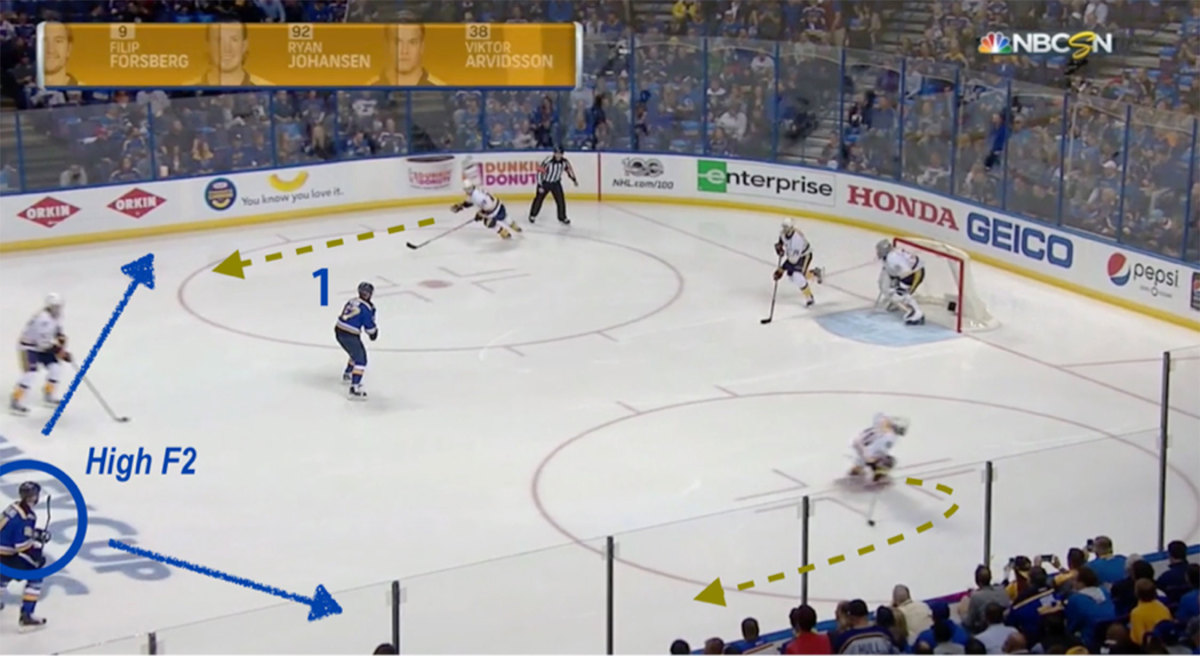
So even when P.K. Subban gets this puck along the wall, Berglund closes the space very quickly. With Perron following the play, Subban can't go up the middle (this is by design). He can either play the puck back where it came from, but given little time to make a decision, he makes the safe play of dumping the puck up the boards. This in turn though ends with the Blues gaining possession.
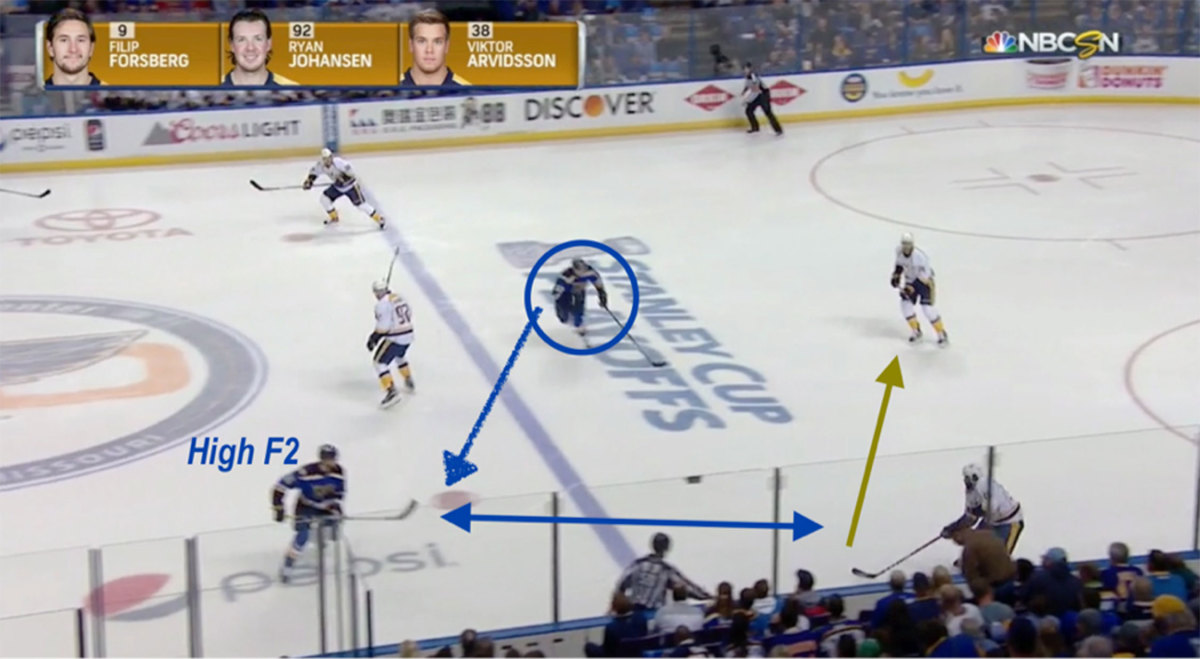
The second period began with the script flipped, St. Louis with the puck and Nashville playing defense.
If the Predators can force the attacking team to dump the puck in, it's a victory for Nashville. Between the mobility and puck-moving skill on its blue line and Rinne's ability to handle the puck, the Predators will easily facilitate controlled exits.
So Nashville's forechecking scheme, also a 1-1-3, is designed to eliminate time in the neutral zone and force teams to flip the puck toward the goal line.
With the Blues looking to head up ice, Viktor Arviddson is pressing up as the 'F1'. There are no other Predators in the frame and they'll concede a little bit more field position thant St. Louis did.
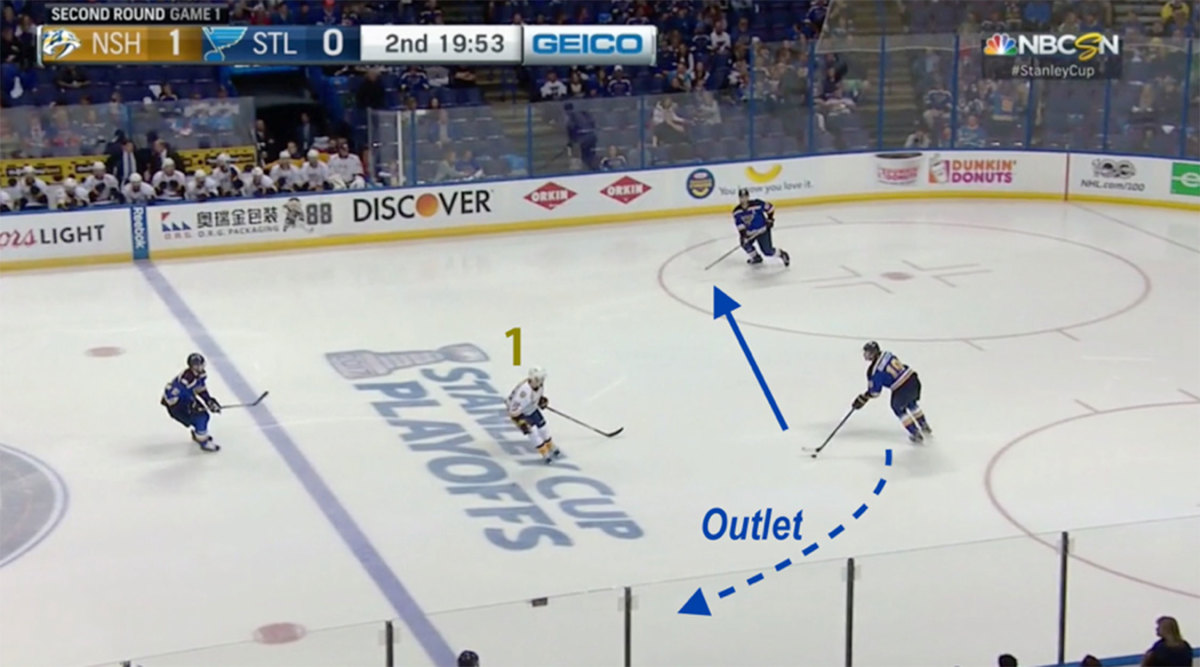
But when Jay Bouwmeester gets the puck along the wall, you can see how cluttered things quickly become. He's immediately met by P.K. Subban; that a defenseman is applying pressure makes it seem like Nashville is running almost a 1-4. Bouwmeester is going to dump the puck in because 90 percent of players would do the same thing there, the 'safe play' with an opposition skater bearing down on them in the neutral zone.
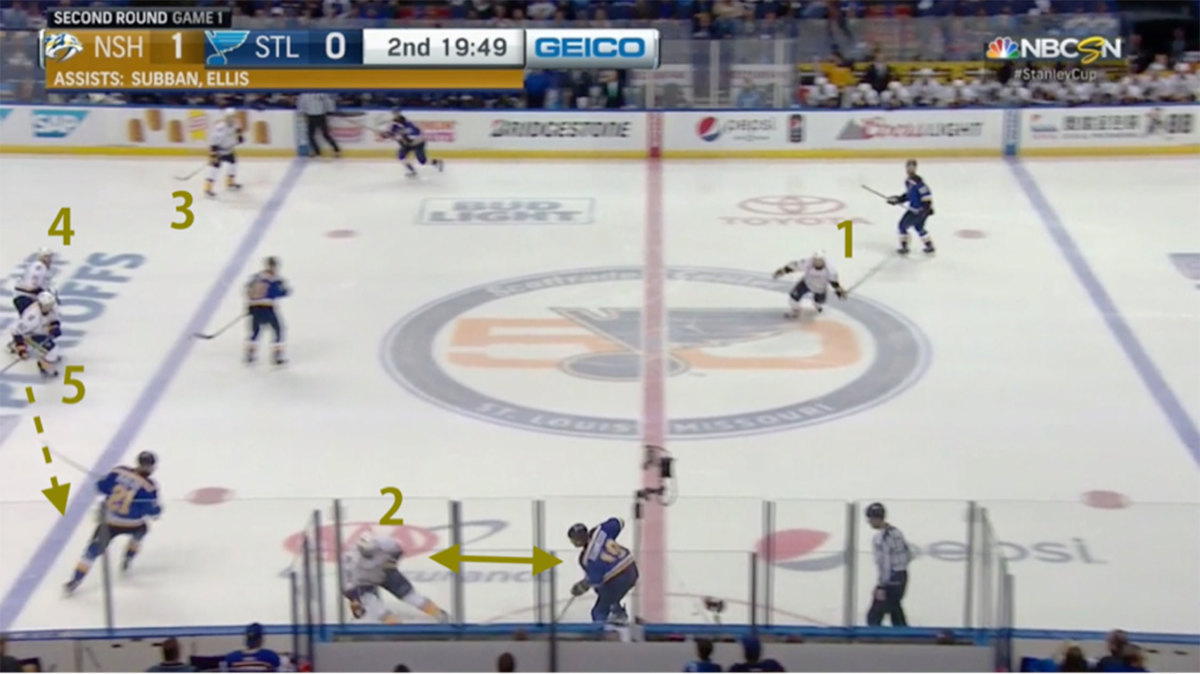
But this puck slides right into the trapezoid, and Rinne can set it up for Mattias Ekholm. And from there, this is an easy read for any NHL defenseman; he can go up the boards to Subban if he receives pressure from that side, or reverse the puck in the opposite direction if that's where the forecheck comes from. And again, it's a quick out for the team defending against the forecheck.
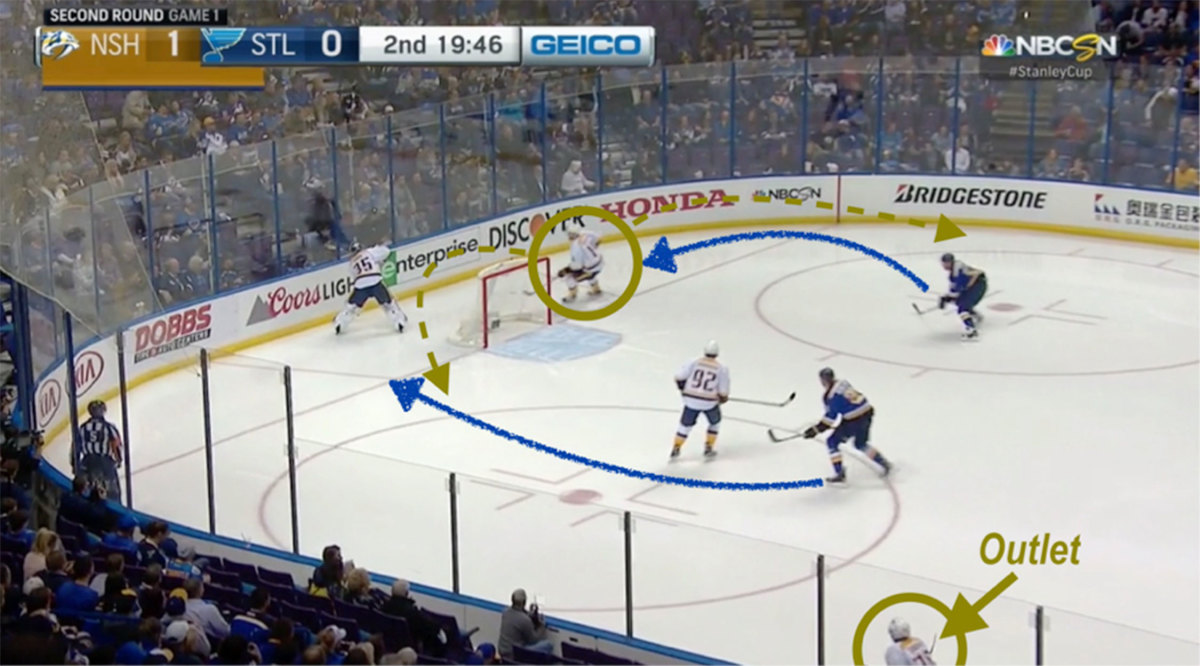
This isn’t the most visually pleasing at times, in some respects a nod to what Kane was referring to. The seven goals in Game 1 would beg to differ, but two of those came on the power play, one on a broken play, and the list goes on. The scoreboard was more a reflection of two goalies coming down to earth than a shift in strategy from the first round.
And this is how these teams will continue to play, until one fall behind in a game or in the series and has its hand forced.
